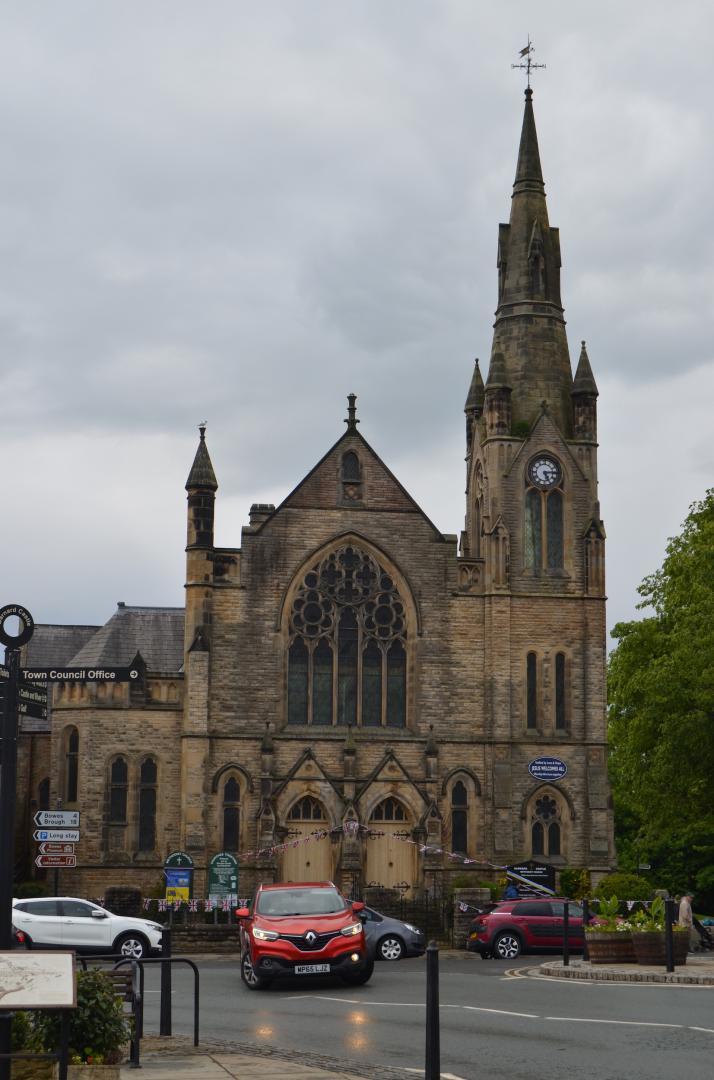A TOWN clock that has stopped at 5.15pm is giving a bad impression of Barnard Castle but officials still don’t know who is responsible – or even if it can be repaired.
They have been searching Teesdale Mercury archives and even acquired a copy of the will of the 1950s town clerk John Ingram Dawson in the hope of discovering who is liable for the Methodist Church clock.
The four ward county councillors for Barnard Castle have agreed to contribute £500 each from their budgets so the church can put up scaffolding to inspect the clock, which stopped earlier this year.
Town councillors have also agreed to donate £500 as a goodwill gesture but are stopping short of accepting liability. It means the church will have to find the rest of the cash for scaffolding – about £3,000. Worshippers may also have to pay the, as yet, unknown cost of the repairs.
The matter was debated by the town council’s resources committee last week.
Cllr Chris Foote-Wood said: “I think it’s perfectly reasonable for this council to at least make a contribution to the cost. It’s good that the four county councillors came up with some funding.
“It’s detrimental to the town to have a clock that has stopped. The town attracts thousands of visitors and the clock is so prominent. It’s for the appearance and we should do what we can to get it moving again. It’s for the sake of the town.”
He accepted the council had “budget constraints” and suggested a public appeal could be launched. Cllr Foote-Wood said it was once commonplace for the public buildings and monuments to be paid for by subscription.
But Cllr Paul Ing sounded a note of caution.
He said: “The issue is that we don’t know how much it is going to cost. By accepting liability, you are spending ratepayers’ money on something that you don’t know the cost of.
“Our contribution to the scaffolding should be a gesture of goodwill and not an admittance of liability.”
The maintenance of the town clock was initially the responsibility of Barnard Castle Urban District Council and it was assumed this passed to Barnard Castle Town Council.
However, town clerk Martin Clark said he hasn’t been able to confirm this to be the “absolute case” as documents refer to the “local authority” which may mean the now defunct Teesdale District Council.
Electricity bills were paid by the old district council and are now covered by Durham County Council, he said.
He added that the Local Government Act 1894 prevents councils maintaining church property. But Mr Clark said a donation towards scaffolding costs would be acceptable.
In a letter to the town council, Barnard Castle Methodist Church said the clock was gifted by former town clerk John Ingram Dawson and church officials were acquiring a copy of his will from 1951.
The church said the Teesdale Mercury archives supported the claim that the upkeep of the clock was the responsibility of the local authority as part of Mr Dawson’s bequest to the town.
“The clock was gifted to the town as an asset, is part of its history and it should be maintained appropriately by the town or it will sadly be lost to our residents,” wrote Margaret Wills, church council secretary. “[Regarding the] town council’s change of name, while it is appreciated that since 1951 name changes will have taken place but as the successor body (ie Barnard Castle Town Council) it would be anticipated that responsibility for any assets and liabilities would be ongoing.”
She added: “We understand from your website that you are ‘the voice of the community, representing its needs and working to deliver the services it requires’.
“It is therefore assumed that the town council would be responsible as the responsibility would not simply ‘die’ on a restructuring of local government.”
However, town councillors on the resources committee agreed not to accept liability.
Cllr Mike McLean said: “The church is saying we are responsible because Ingram Dawson said so in his will. But I can’t write a will and make someone else liable for something.”
Cllr Laura Drew added: “I do not think the liability has been established.”
Cllr Ing warned that the cost could be higher than people expected, saying the clock wasn’t designed for the building.
“They might have to strip the stained glass to look at it – it’s a minefield,” he said.
ADVERTISEMENT
Welcome to Barnard Castle – where it is always 5.15pm
ADVERTISEMENT
ADVERTISEMENT
ADVERTISEMENT







